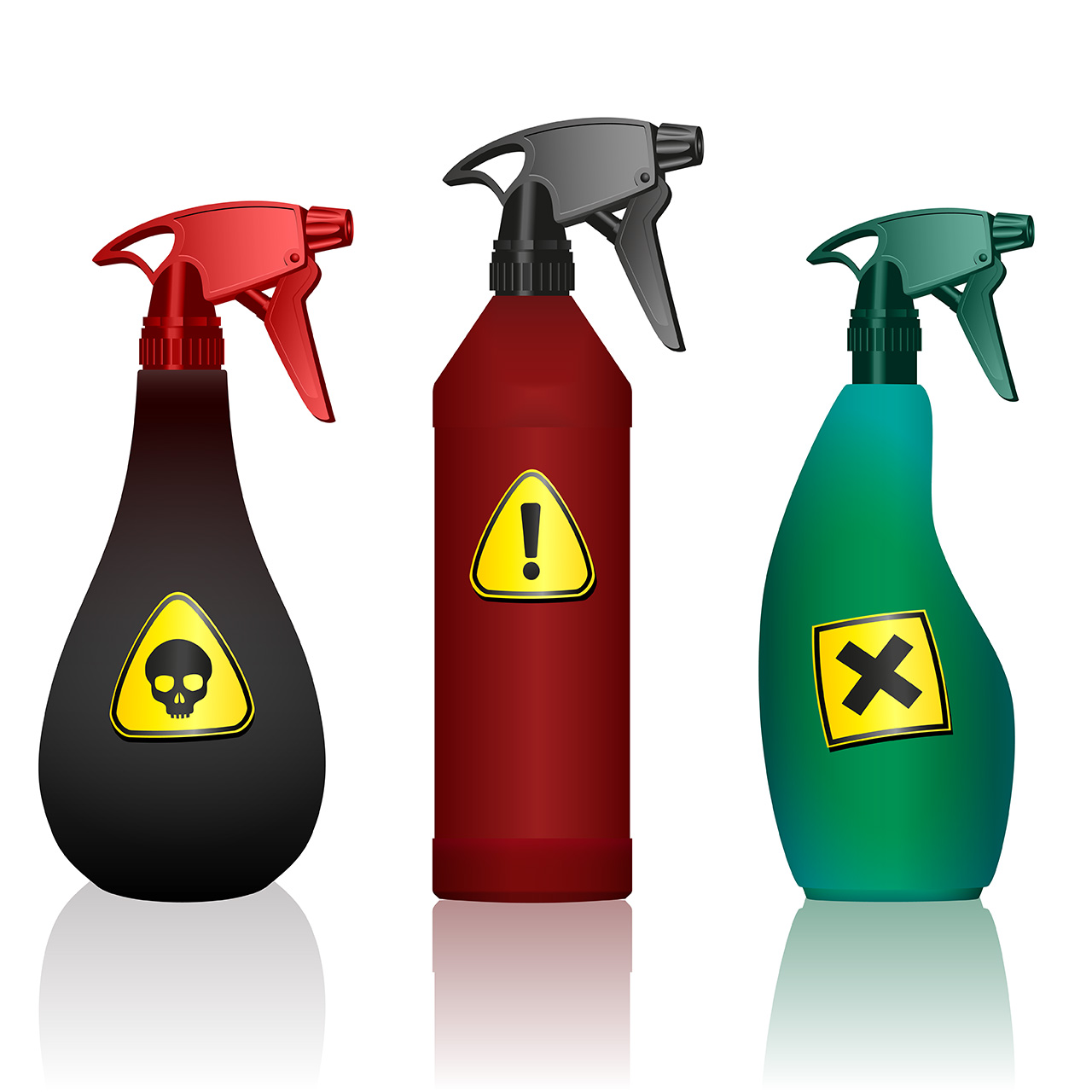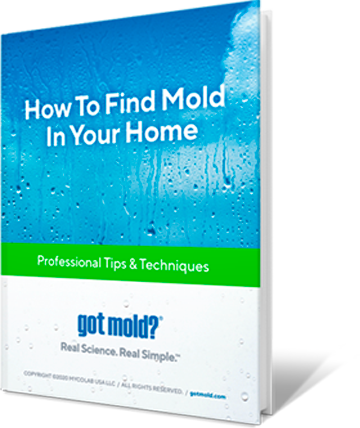
Every day, people with asthma, allergies, sinus problems — and a number of other maladies — contact mold professionals with the suspicion that something in their home is causing or at least exacerbating their woes. And, more often than not, when a mold problem is discovered and subsequently corrected, these people see immediate, sometimes dramatic improvements to their health and quality of life.
Find the mold, get rid of the mold, live a better life. Sounds simple enough, right? Not so fast. Finding the mold and its source is no easy feat (though it’s recently gotten a lot easier). And getting rid of the mold, which is what we’ll be discussing here, is frequently complicated by differences of opinion and numerous misconceptions, particularly related to biocides, the umbrella term for a wide range of products that include disinfectants, fungicides, and antimicrobials.
The main misconception is that getting rid of mold involves killing it first, as if it’s something you should sneak up behind and snuff out before it knows you’re there. Yes, this stuff can be dangerous, but not like that.
Problem is, many homeowners and contractors believe that if you kill mold, by fogging or spraying it with some EPA-registered biocide, the job of removal will be easier or more effective. Nothing could be further from the truth. Proper mold remediation has zero to do with killing mold—it’s about removing it and fixing the moisture problem that caused the issue in the first place.
Even if you were to “kill” mold with a biocide, dead mold is still allergenic and potentially toxic, according to the EPA. In other words, leaving behind dead mold doesn’t do you any good. What you’re really doing is adding another toxin and an additional costly step to the remediation process. It’s not a shortcut nor a helping hand, it’s a boondoggle. Moreover, many of the products sold as biocides are more dangerous than the mold itself and its byproducts.
And here’s another thing: Most biocides are water-based, with the active ingredient evaporating relatively quickly. Bleach, for example, is 3% sodium hypochlorite (active ingredient) and 97% water, so when it’s used in mold remediation and the sodium hypochlorite dissipates, what’s left behind is…that’s right—water! Congratulations, we’ve just added water to a water problem. Mold spores will settle on the dampness left behind, eat the dead mold that wasn’t removed, and grow right back again. Hello, Square One.
Not only are you adding an additional, unnecessary toxin to your home or workplace, but you may also be stimulating the mold to produce more of the very thing many people worry about most when they have a mold problem: mycotoxins. Mycotoxins are the toxic compounds some molds produce from time to time, and there is strong evidence that chronic exposure can have negative effects on human health. Ironically, research has also shown that mycotoxin production may actually be stimulated by fungicides. This is the definition of counterproductive.
Generally speaking, there are but a few circumstances when biocides are prudent and should be considered, like when bacteria is a concern, such as after sewage spills or certain kinds of floods, and in certain circumstances involving individuals with compromised immune systems. Other than that, the vast majority of mold remediation projects should be free of chemicals and killing agents.
Mold remediation, as described in the IICRC S520 Mold Remediation Standard, widely regarded as the gold standard in removal, is to restore an affected property to a “normal” condition. Here’s what’s involved. It’s really simple (and chemical-free).
- Fix the water problem causing the mold.
- Isolate the work area.
- Remove affected materials that cannot be cleaned, such as wallboard, insulation, ceiling tiles, carpet, carpet padding and other porous items.
- Clean the remaining surfaces that can be cleaned such as wood, glass, metal, plastic, concrete, tile, etc., using HEPA vacuums and good, old-fashioned, elbow grease. Scrub the air with HEPA filters.
- Verify microscopically that the air and surfaces no longer contain abnormal levels of fungal material.
We as a society have already done immense damage to ourselves and to the environment with our obsessive use of antibiotics, antimicrobials, herbicides, pesticides, and other poisons. In addition to the damage it can do to us as individuals when misused (which is almost always the case), these compounds are also creating new microbes that are resistant to the very poisons we lavish upon them, making stronger, heartier foes in the microscopic world. It’s the law of unintended consequences.
Interestingly, with this very knowledge in mind, a company called Homebiotic has created a probiotic surface spray for moisture-prone areas, like under the kitchen sink, or in a bathroom where you may have poor ventilation. While they do not make claims that it kills mold, since it’s neither a fungicide nor a pesticide — which is the whole point — the idea is that friendly microbes colonize the surface and go to work as a preventive measure. The formulation is based on proven organisms, and there’s some additional testing underway to quantify its effectiveness on different surfaces and for other applications. But in the meantime, anecdotal evidence has shown it works very well.
Finally, there’s a constant desire by contractors and homeowners to apply antimicrobial paints and finishes to surfaces during remediation. This is another unnecessary and wasteful step. Most of the antimicrobial value of these paints dissipates in a matter of months, leaving behind nutrition to support fungal growth if the right amount of moisture is present. In all cases, the mold won’t return without moisture. So adding a coating isn’t necessary if it’s dry. If it’s wet, the mold will return no matter how much antimicrobial paint you apply.
At the end of the day, there’s only one truly effective antifungal. It works every time with no adverse reactions, and it never dissipates. It’s called anti-dihydrogen monoxide, or anti-DHMO. DHMO is a very simple compound, comprised of two hydrogen atoms and one oxygen atom. Laypeople call it water. So anti-DHMO is just anti-water!
Attempts at humor aside, the point is this: By keeping your home clean and dry, you won’t have any need to wade into the harmful, counterproductive world of biocides.
Photo by Towfiqu barbhuiya on Unsplash

